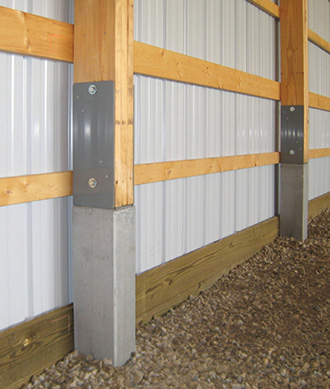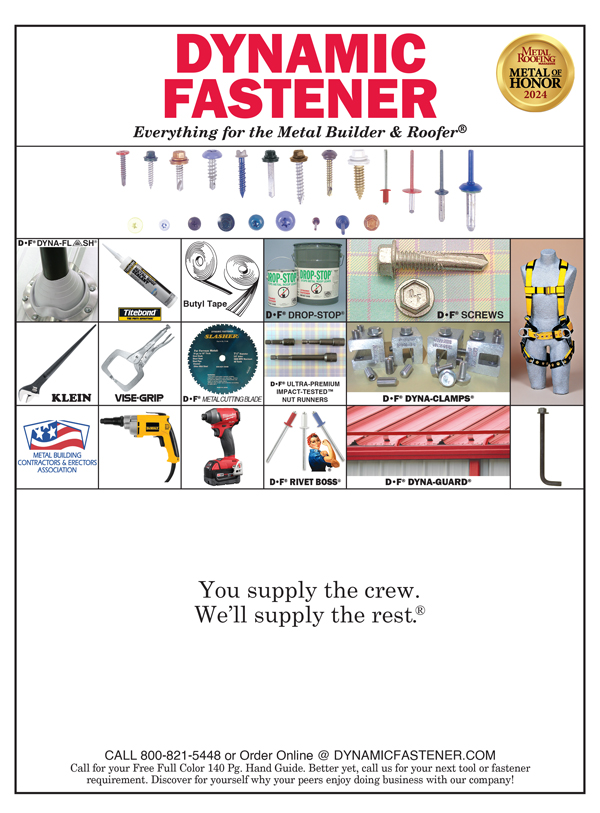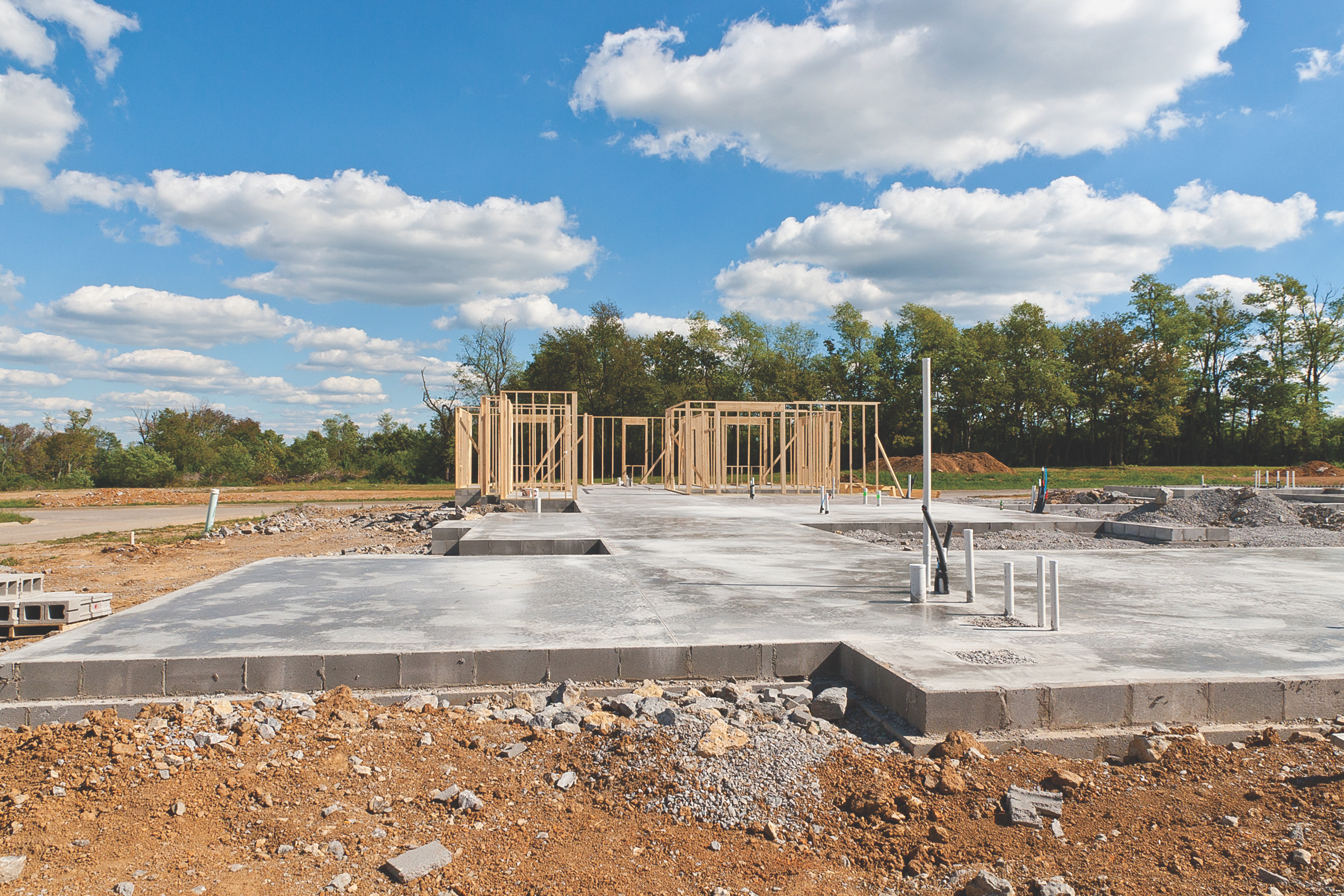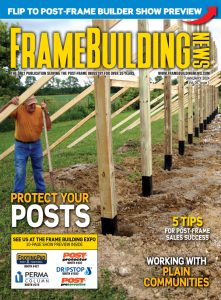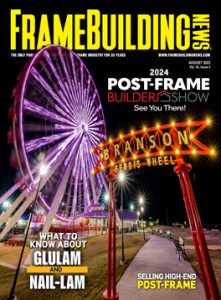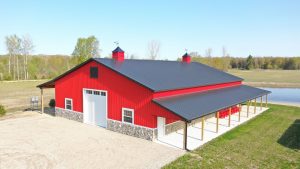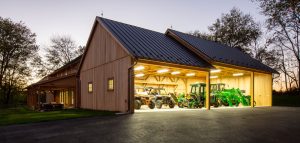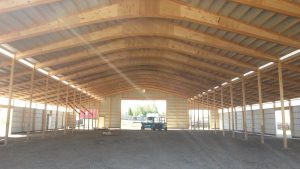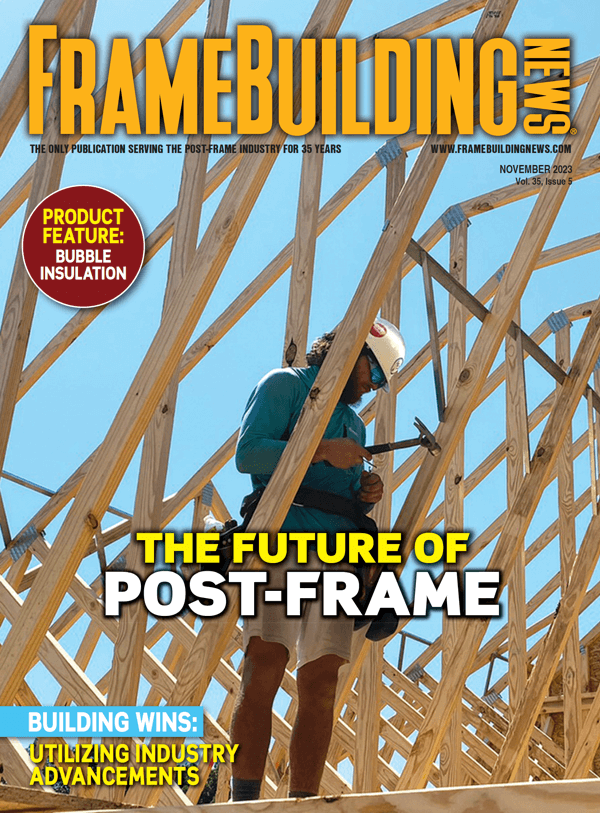What every post-frame builder should know about laminated columns
By Sharon Thatcher
The single most important element to a building’s foundation is its columns. They’re the legs that hold the building upright. As post frame has evolved, it’s only natural that methods to improve the strength of those legs would be part of its evolution.
For a comprehensive explanation of laminated columns, the second edition of the NFBA Post Frame Building Design Manual contains a chapter by David R. Bohnhoff, Ph.D., University of Wisconsin-Madison. Bohnhoff has been breaking columns in the name of science since the 1980s. In fact, he got the Ph.D. behind his name after writing his doctoral thesis on laminated columns, which led to the standards for design and manufacturing of mechanically laminated columns.
Frame Building News offers a more generalized explanation here, relying on NFBA members who have embraced the technology in manufacturing, along with other industry insiders.
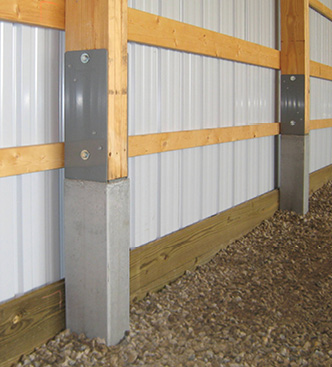
There are many ways to laminate columns, but the industry keeps them confined into two basic categories: mechanical fastened (mechlam) and glue laminated (glulam). Mechlams utilize nails (a popular type of mechlam called nail-lam) and/or other mechanical fastener components (screws, bolts, and/or metal plates) while, as the name implies, glulam utilizes glue or a glue-like adhesive.
Bohnhoff’s chapter 8 clearly defines each and breaks down all the variations of mechlam. Because nail-lam and hybrid versions of nail-lam (including the use of both nails and glue) are the most recognized mechlam products in use today, this article makes use of the commonly used term “nail-lam.”
Arguments rage over which is best, but properly manufactured, both nail-lam and glulam trump solid-sawn timber in certified testing labs for consistency of strength, straightness, and uniformity of preservative treatment.
A glulam typically has good bending strength regardless of which column face is loaded, so it has advantages in applications in which the column does not have lateral support like that provided by wall girts. Such is the case with many interior columns and columns supporting the open side of a building. Nail-lam columns can be used in such applications, but typically need additional bracing such as faceplates to prevent buckling or bending around their weak axis.
The environmental and economical advantages of laminated columns were addressed in an article, “Engineered Wood Products STRETCH Post-Frame Possibilities” by Robert Clark, APA, Engineered Wood Association, which [at the time of publication was] housed on the NFBA website. “Engineered wood posts can use smaller diameter trees harvested from a managed forest dried to a low moisture content,” he wrote. “These dimensionally stable products resist deformations such as warping and twisting. And, because of the dispersal of natural growth characteristics such as knots and wane, they exhibit superior strength over solid-sawn posts.”
Just as today’s solid-sawn timbers, laminated columns are treated for preservation to endure the ravages of natural deterioration. While some manufacturers treat the entire finished post, many manufacturers treat the individual laminations prior to gluing or nailing. In this method, typically only the lower section of the post that will be installed in the ground is preservative-treated, which can be cost-effective and provide increased chemical coverage area at the interior of the post.
If you are considering the switch from solids to laminates, or you are questioning your choice of lamination, Dale Schiferl of Timber Technologies, Colfax, Wisconsin cautions: “Not all laminated columns are created equal.
“I have seen about a dozen different ways to ‘laminate’ a column in the past 20 years,” he said. “Everything from truss plates, to nails, to finger joints, to butt joints, to construction adhesive with nails, to gusset plates, to screws, to wire rivets, to bolts, and totally glue laminated. I have also seen a wide array of lumber utilized, from the highest grade of MSR and Select Structural lumber to the lowest grade and species of #2. Unlike other structural wood components, column manufacturing is like the Wild West, standards are not enforced. Basically everybody does what works best or cheapest for them.”
A lot of engineering goes into the proper design of laminated columns, Schiferl went on to note. “It should be important that specifiers and builders understand there are ‘standards’ to how columns are built up, be it nails or glue, and they ask for some verification that the products they are using follow the standards. The standards were established through testing by smart people like Dave Bohnhoff and Harvey Manbeck and through efforts of the NFBA. It does not make it OK to build up a column however one chooses just because the standards are not enforced,” he said.
Mike Burkholder, P.E., Ohio Timberland Products (OTP), Stryker, Ohio, echoes that sentiment. His company has been making nail-laminated columns for more than 20 years. Although he explained that, “there had been people nailing boards together for years,” Ohio Timberland Products began testing at Virginia State University in 1994 in the lab of Dr. Frank Woeste. By then, Bohnhoff was testing nail-lam and eventually created what Burkholder calls the “Bible” or “Genesis” of standards for the industry, but as far as developing its own production standards, OTP blazed its trail through the Woeste lab.
The price of laminated columns is one that arises on a daily basis for laminated column manufacturers like Elmer Sensenig, Richland Laminated Columns, Greenwich, Ohio.
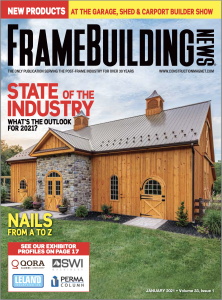
“Laminated columns are very comparable [to solid-sawn columns],” he tells his customers. “For 20′ and longer, they’re actually less costly than a 6″ x 6″. The shorter you go, 14′ to 16′, the laminated columns are a little bit more.” Because builders typically need a combination of sizes, Sensenig stressed, “price is normally not an issue because it averages out.”
Some builders use so many laminated columns of varying lengths that it pays to invest in their own machine. Semmler Systems caters to this group. Owner Jim Semmler is now in the third generation of his Big Red column laminator and he sees three basic customers looking to buy their own: larger contractors who need a variety of column sizes and don’t want to be delayed by shipping problems or quality control issues that are beyond their own control; builders who have found a regional market for laminated columns and have transitioned out of construction to become suppliers; and truss plants that are already set up in a fabrication mode and find it a natural expansion of their product lines.
“I had one sale on the Big Red because the glulams were delaminating. Now he builds as he needs them and he doesn’t have to rely on glulams that have manufacturing issues.”
To assist companies that have no in-house engineers to assure quality control, Semmler has developed a guide that explains how to manufacture laminated columns to specification. His brand of laminated column is a hybrid between glulam and nail-lam that falls under the mechanical fastener category.
There isn’t anything too complicated about installation. The treated end goes into the ground, and the column is turned so edges between laminations are visible when viewing either the outside or the inside surface of the column. Occasionally a builder will rush and get it wrong, compromising column strength.
Sensenig also recommends girts every 3′ for support against buckling. “Nail-lam columns are not designed to be like a flagpole,” he explained. “They are an engineered product.”
To help hoist laminated columns, builder Scott Cook, Champion Steel Buildings, invented The Brut Post Grabber. A universal plate attaches to any skid steer or other steel loader and takes the manhandling out of the task of installation.
Cook grew up around the business, but didn’t get serious about creating a better solution until he had his own company.
“I started scratching on a napkin three years ago and made a few different designs, then I created the prototype. After using it and having other guys using it and liking it I decided, hey, I have to share this with others. Now I have a patent pending.”
Cook said that post-frame companies are purchasing The Brut Post Grabber for their crews to help avoid injuries on the job, which didn’t come soon enough for Cook, who now suffers back injuries from all those posts he hoisted before he created the innovative product. FBN


